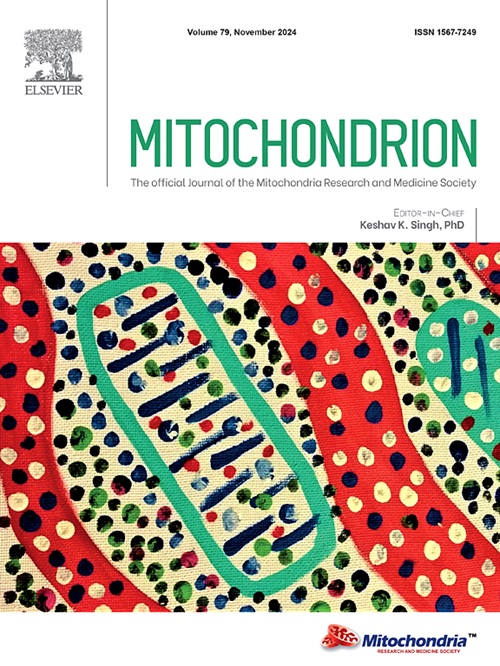Transcription coupled repair occurrence in Trypanosoma cruzi mitochondria
IF 4.5
3区 生物学
Q2 CELL BIOLOGY
引用次数: 0
Abstract
Although several proteins involved in DNA repair systems have been identified in the T. cruzi mitochondrion, limited information is available regarding the specific DNA repair mechanisms responsible for kinetoplast DNA (kDNA) maintenance. The kDNA, contained within a single mitochondrion, exhibits a highly complex replication mechanism compared to the mitochondrial DNA of other eukaryotes. The absence of additional mitochondria makes the proper maintenance of this single mitochondrion essential for parasite viability.
Trypanosomatids possess a distinct set of proteins dedicated to kDNA organization and metabolism, known as kinetoplast-associated proteins (KAPs). Despite studies identifying the localization of these proteins, their functions remain largely unclear. Here, we demonstrate that TcKAP7 is involved in the repair of kDNA lesions induced by UV radiation and cisplatin. TcKAP7 mutant cells exhibited phenotypes similar to those observed in Angomonas deanei following the deletion of this gene. This monoxenic trypanosomatid colonizes the gastrointestinal tract of insects and possesses a kinetoplast with a distinct shape and kDNA topology compared to T. cruzi, making it a suitable comparative model in this study. Additionally, we observed that DNA damage can trigger distinct signaling pathways leading to cell death. Furthermore, we elucidated the involvement of CSB in this response, suggesting a potential interaction between TcKAP7 and CSB proteins in transcription-coupled DNA repair. The results presented here describe, for the first time, the mechanism of mitochondrial DNA repair in trypanosomatids following exposure to UV radiation and cisplatin.
克氏锥虫线粒体转录偶联修复的发生。
虽然在克氏T. crozi线粒体中已经发现了一些参与DNA修复系统的蛋白质,但有关着丝体DNA (kDNA)维持的特定DNA修复机制的信息有限。与其他真核生物的线粒体DNA相比,包含在单个线粒体内的kDNA表现出高度复杂的复制机制。额外线粒体的缺失使得这一线粒体的适当维持对寄生虫的生存至关重要。锥虫拥有一组独特的蛋白质,专门用于kDNA的组织和代谢,称为动质体相关蛋白(KAPs)。尽管研究确定了这些蛋白质的定位,但它们的功能在很大程度上仍不清楚。在这里,我们证明TcKAP7参与了紫外线辐射和顺铂诱导的kDNA损伤的修复。TcKAP7突变细胞表现出类似于该基因缺失后在deanei绒单胞菌中观察到的表型。这种单基因锥虫寄生在昆虫的胃肠道中,具有与克氏锥虫不同的形状和kDNA拓扑结构的着丝体,使其成为本研究的合适比较模型。此外,我们观察到DNA损伤可以触发导致细胞死亡的不同信号通路。此外,我们阐明了CSB在这一反应中的参与,表明TcKAP7和CSB蛋白在转录偶联DNA修复中可能存在相互作用。本文的研究结果首次描述了暴露于紫外线辐射和顺铂后锥虫线粒体DNA修复的机制。
本文章由计算机程序翻译,如有差异,请以英文原文为准。
求助全文
约1分钟内获得全文
求助全文
来源期刊

Mitochondrion
生物-细胞生物学
CiteScore
9.40
自引率
4.50%
发文量
86
审稿时长
13.6 weeks
期刊介绍:
Mitochondrion is a definitive, high profile, peer-reviewed international research journal. The scope of Mitochondrion is broad, reporting on basic science of mitochondria from all organisms and from basic research to pathology and clinical aspects of mitochondrial diseases. The journal welcomes original contributions from investigators working in diverse sub-disciplines such as evolution, biophysics, biochemistry, molecular and cell biology, genetics, pharmacology, toxicology, forensic science, programmed cell death, aging, cancer and clinical features of mitochondrial diseases.
 求助内容:
求助内容: 应助结果提醒方式:
应助结果提醒方式:


